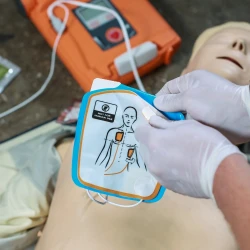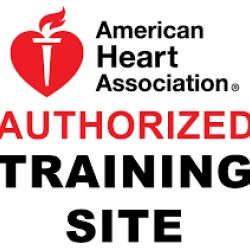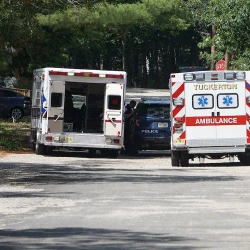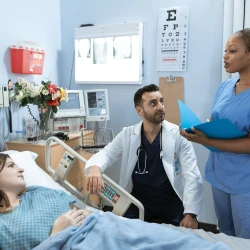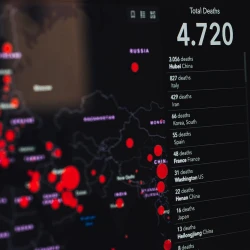In times of crisis, when every moment counts and lives hang in the balance, the first responders who arrive on the scene are the unsung heroes. Emergency Medical Technicians (EMTs) are the frontline warriors in the world of medical emergencies, providing critical care and immediate assistance to those in need. The journey to becoming an EMT is one marked by compassion, dedication, and a commitment to making a difference. EMT classes serve as the foundational pathway to entering this noble profession, equipping individuals with the skills, knowledge, and mindset required to thrive in the fast-paced world of pre-hospital care. This article delves into the multifaceted journey of becoming an EMT through comprehensive EMT classes, exploring the training, experiences, and transformation that define this crucial career path.
The Role of an EMT: A Glimpse into Pre-Hospital Care
Before delving into the journey of becoming an EMT, it's essential to understand the pivotal role they play in the realm of healthcare. EMTs are the first responders to medical emergencies, ranging from heart attacks and accidents to natural disasters and trauma situations. They are the individuals who provide immediate medical attention, stabilize patients, and transport them safely to medical facilities for further treatment. The critical nature of their role requires EMTs to possess a unique blend of medical knowledge, technical skills, and the ability to remain composed under pressure. EMT classes are the foundational step in cultivating these essential qualities.
The EMT Training Curriculum: An In-Depth Exploration
EMT classes serve as a comprehensive educational journey, designed to prepare individuals for the rigors of pre-hospital care. The training curriculum encompasses a diverse range of topics, combining theoretical knowledge with practical skills. Let's take a closer look at the key components of EMT training:
Anatomy and Physiology
Understanding the human body is fundamental for EMTs. EMT classes provide an in-depth exploration of anatomy and physiology, focusing on the systems and functions most relevant to emergency medical care. This knowledge forms the basis for assessing patient conditions and delivering appropriate treatments.
Medical Terminology
Effective communication is vital in emergency situations. EMT classes include lessons on medical terminology, equipping students with the vocabulary necessary to interact with medical professionals and convey crucial information accurately.
Trauma Care
Accidents, injuries, and traumatic incidents demand specialized care. EMT training covers trauma assessment, bleeding control, wound management, and immobilization techniques. EMTs learn how to swiftly and efficiently address life-threatening injuries.
Cardiac Emergencies
Heart-related emergencies, including cardiac arrests, require immediate intervention. EMT classes delve into the recognition and management of cardiac events, including cardiopulmonary resuscitation (CPR) techniques and defibrillator usage.
Respiratory Distress
EMTs learn to recognize and address respiratory issues, such as asthma attacks and difficulty breathing. Understanding the signs of respiratory distress allows EMTs to provide timely interventions to support breathing.
Medical Emergencies
From diabetic emergencies to seizures, EMTs are trained to respond to a wide range of medical crises. EMT classes equip students with the knowledge to assess patients, administer medications, and manage various medical conditions.
Emergency Childbirth
In situations where there is no access to medical facilities, EMTs might find themselves assisting with childbirth. EMT training covers the basics of childbirth and the necessary steps to ensure the safety of both the mother and the newborn.
Pharmacology
Understanding medications and their administration is a critical aspect of EMT training. EMTs learn about common medications used in emergency situations and their appropriate dosages.
Patient Assessment
One of the cornerstones of EMT training is patient assessment. EMTs are taught systematic methods for evaluating patients' conditions, from assessing vital signs to conducting thorough physical exams.
Communication and Documentation
Clear communication and accurate documentation are essential for continuity of care. EMT classes emphasize the importance of effectively communicating with patients, their families, and other medical professionals, as well as accurately documenting patient information.
Practical Skills and Simulation
Hands-on training is a hallmark of EMT classes. Simulated scenarios and practical exercises enable students to apply their knowledge in real-world situations. This hands-on experience is invaluable in building confidence and competence.
The EMT Class Experience: From Knowledge to Action
EMT classes are not just about absorbing information; they are about transforming knowledge into action. Through a combination of classroom lectures, hands-on training, simulations, and clinical experiences, EMT students are exposed to the dynamic and high-pressure environment they will encounter as first responders. This comprehensive training approach ensures that EMTs are equipped to handle a diverse range of emergencies with skill, compassion, and professionalism.
Classroom Learning
The theoretical foundation of EMT classes is delivered through classroom lectures and discussions. Students delve into medical concepts, terminology, and protocols, gaining a deep understanding of the principles that guide pre-hospital care.
Hands-On Training
Hands-on training is the heart of EMT classes. Students practice essential skills, such as CPR, bandaging, splinting, and airway management, under the guidance of experienced instructors. These practical exercises allow students to develop muscle memory and confidence in performing critical interventions.
Simulated Scenarios
Simulation labs are a hallmark of EMT training. Students step into realistic scenarios that mimic actual emergencies. Whether it's responding to a car accident, managing a cardiac arrest, or stabilizing a trauma victim, simulations provide a controlled yet authentic environment for students to apply their skills and decision-making abilities.
Clinical Rotations
Clinical rotations offer students the opportunity to work alongside experienced EMTs in real-world settings, such as ambulance services or emergency departments. This hands-on experience exposes students to the pace, challenges, and dynamics of pre-hospital and hospital-based care, allowing them to observe and participate in patient care under supervision.
Teamwork and Communication
EMT classes also emphasize the importance of teamwork and communication. Effective collaboration with other healthcare professionals, as well as clear communication with patients and their families, is essential for providing holistic and high-quality care.
Developing Critical Thinking
EMTs are required to think on their feet and make quick decisions in high-pressure situations. EMT classes cultivate critical thinking skills by presenting students with complex scenarios and challenging them to prioritize interventions, adapt to changing conditions, and provide appropriate care.
The Transformation: From Student to First Responder
The journey through EMT classes is transformative, turning aspiring individuals into skilled and compassionate first responders. This transformation is characterized by several key elements:
Knowledge Expansion
EMT classes expand students' medical knowledge and equip them with the expertise required to address a wide range of emergencies. From understanding the intricacies of the human body to grasping the mechanisms of different medical conditions, EMTs emerge from their training with a profound understanding of healthcare.
Skill Mastery
Hands-on training and simulations enable students to master critical skills. EMTs become adept at performing life-saving interventions, administering medications, managing airways, and more. The repetition and practice ingrained during EMT classes translate into the muscle memory required to perform these tasks efficiently and confidently.
Confidence Building
Confidence is a cornerstone of effective emergency care. As EMTs navigate through various scenarios in training, they develop a sense of self-assuredness in their abilities. This confidence is essential for making decisions under pressure and providing assurance to patients during distressing situations.
Compassionate Care
EMT classes emphasize
the importance of empathy and compassionate care. EMTs learn not only the technical aspects of medical intervention but also the human side of healthcare. Treating patients with respect, actively listening to their concerns, and offering reassurance are integral aspects of the EMT's role.
Adaptability and Resilience
The unpredictable nature of emergencies requires EMTs to be adaptable and resilient. EMT classes expose students to a diverse range of scenarios, training them to handle the unexpected with composure and agility.
Ethical Responsibility
EMTs are often faced with complex ethical dilemmas, such as respecting patient autonomy and making decisions in challenging circumstances. EMT classes provide a foundation in ethical considerations, ensuring that EMTs uphold the highest standards of care and professionalism.
Beyond EMT Classes: A Career of Service
Becoming an EMT is not just about completing classes; it's a lifelong commitment to service and continuous learning. EMTs enter a dynamic field that demands ongoing education and adaptation to new medical advancements. EMTs may choose to specialize further by pursuing additional certifications, such as Advanced EMT or Paramedic, expanding their scope of practice and depth of expertise.
Conclusion
EMT classes serve as the gateway to a fulfilling career as a first responder. The journey from aspiring individual to proficient EMT is marked by comprehensive training, hands-on experiences, and a transformation of both knowledge and character. EMTs emerge from their training equipped with the skills to save lives, the compassion to provide comfort, and the resilience to face the challenges of pre-hospital care. As the unsung heroes who answer the call in times of crisis, EMTs exemplify the true spirit of service, making an indelible impact on individuals, families, and communities. EMT classes are not just a pathway; they are the cornerstone of a vocation that embodies the essence of humanity's capacity for care and compassion.
